Key takeaways:
- Lighting is crucial in photography, influencing both technical and emotional aspects of portraits.
- Different lighting techniques, such as Rembrandt, soft lighting, low key, and high key, each offer unique effects and moods.
- Utilizing equipment like softboxes, reflectors, and tripods can significantly enhance portrait lighting quality.
- Experimenting with lighting direction, color temperature, and backlighting can lead to creative and transformative results in portraits.

Understanding lighting in photography
Lighting is the backbone of photography, especially when it comes to portraits. I remember the first time I experimented with natural light; I was completely fascinated by how the softness of the morning sun could wrap around my subject, casting delicate shadows and bringing warmth to their expressions. Have you ever noticed how a simple change in the angle of the light can transform a portrait from flat to striking?
Understanding how different types of light affect your subject is crucial. For example, harsh light can create unflattering shadows, while diffused light can enhance skin tones beautifully. It’s like painting with light; each source can bring out various aspects of the personality you’re trying to capture. Have you found yourself in a situation where you had to adapt quickly to changing light conditions? I’ve had those moments where the ambiance shifted, prompting me to rethink my approach in an instant.
The role of lighting is not merely technical; it’s also emotional. When I photograph someone in golden hour light, I feel an energy that resonates with both me and the subject. It’s magical! In those moments, it’s not just about capturing an image but about conveying a feeling that draws others in. How do you choose the right lighting to tell your story? Understanding lighting goes beyond settings; it’s about connecting emotionally with your subject and your audience.
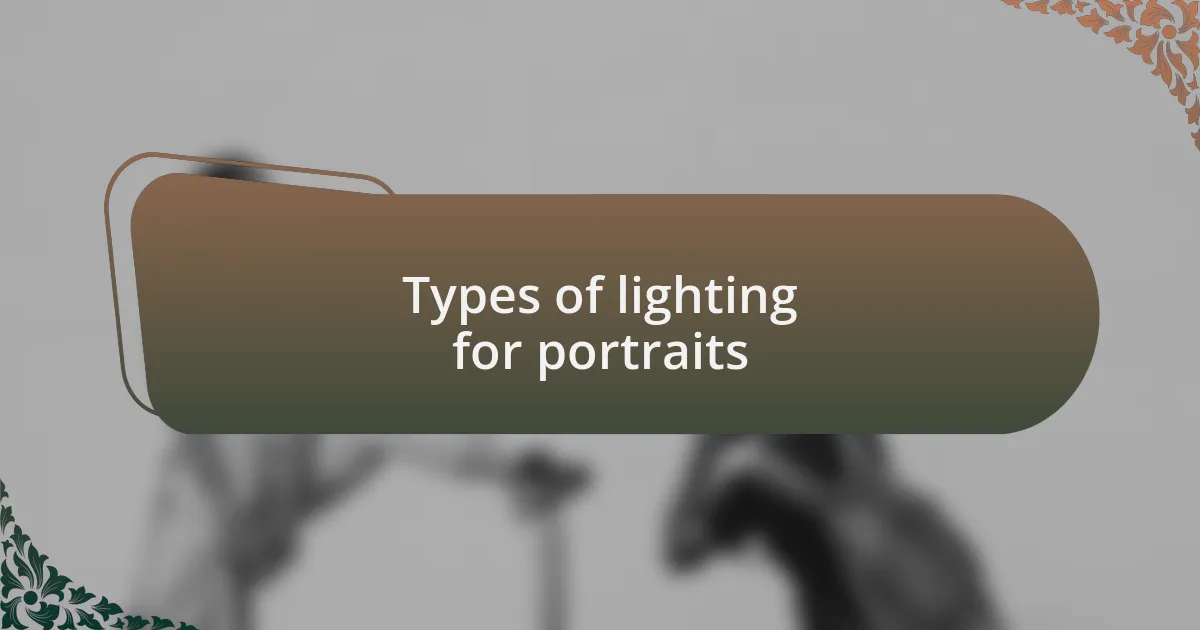
Types of lighting for portraits
When it comes to types of lighting for portraits, one of my favorites is Rembrandt lighting. This technique creates a distinct triangle of light on the shadow side of the face, adding depth and character. I recall a session where this style transformed a seemingly ordinary portrait into something that felt both dramatic and intimate. Have you ever experimented with this classic approach?
Soft lighting is another fantastic option, especially when working with natural light. I often find that shooting on overcast days yields beautiful, flattering results, as the clouds act like a giant softbox. This type of lighting wraps around the subject, creating a gentle atmosphere that feels approachable. Have you noticed how it can soften even the most intense expressions?
Conversely, harsh lighting can provide a bold, high-contrast look that vividly captures emotion. I once took portraits under direct midday sun, and while it was challenging, the results were striking. The shadows carved out unique features, giving the photographs an edge that was unexpected yet captivating. How do you adapt your style to embrace the challenges that different lighting conditions bring?
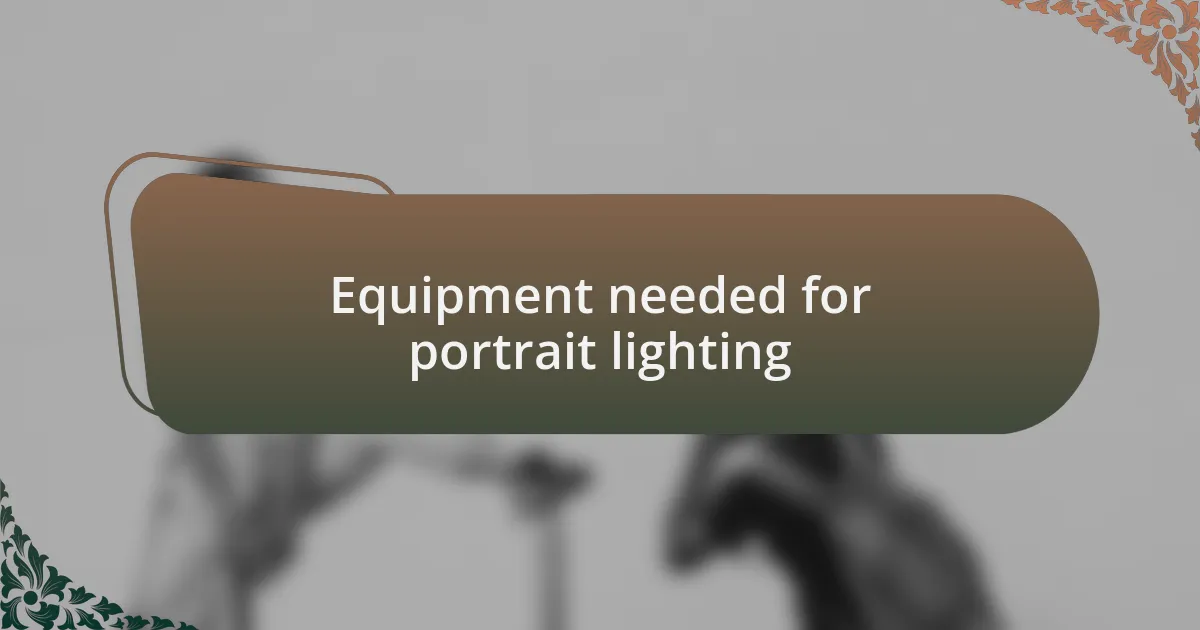
Equipment needed for portrait lighting
When it comes to equipment for portrait lighting, a quality softbox is a must-have in my toolkit. I remember setting up for a portrait session with a softbox on a chilly morning. As I adjusted the light, the way it diffused made the subject’s skin glow like it was kissed by the morning sun. Have you ever noticed how a softbox can create that dreamy quality in the skin tone?
Another vital piece of equipment is a good reflector. I often use it to bounce light back onto the subject’s face, especially during outdoor shoots. I recall a session in a park where the sunlight was a bit uneven; using a reflector transformed the look completely, filling in shadows and enhancing the natural beauty. It’s incredible how something as simple as a reflector can make such a difference in achieving balanced exposure. Have you found yourself using one in your portrait work?
Finally, I can’t stress enough the importance of a sturdy tripod, particularly when working in lower light conditions or with longer exposures. I once faced a tricky lighting situation during a twilight shoot, and my tripod became my best friend. It allowed me to keep the camera steady, resulting in sharp images where the ambient light created a magical atmosphere. How often do you rely on a tripod for stability during your shoots?
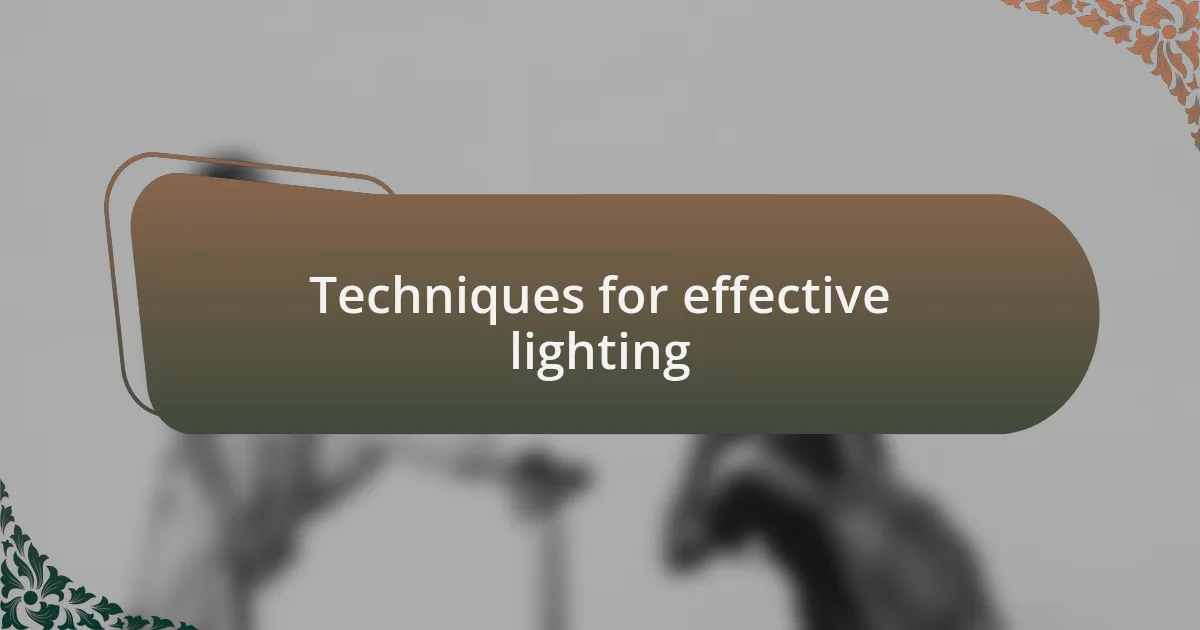
Techniques for effective lighting
When it comes to effective portrait lighting, mastering the use of low and high key lighting techniques can vastly impact your images. Low key lighting creates dramatic shadows, which can add depth and emotion to a portrait. I remember experimenting with this style during a moody indoor session; the contrast created by strategically placing a single light source made my subject look almost cinematic. Have you ever tried this approach to convey a specific mood in your work?
On the flip side, high key lighting is invaluable for achieving a bright and airy feel in portraits. I often find myself opting for this technique when shooting joyful moments, like family gatherings or celebrations. I can still picture a lively birthday shoot where the even illumination enhanced every smile, giving the images a fresh and cheerful vibe. It’s fascinating how lighting can dictate the emotions captured in a photograph, wouldn’t you agree?
Angle also plays a crucial role in how light interacts with your subject. I once discovered that varying the light source’s position can produce unexpected yet captivating results. During a session with a dancer, I angled the light to create elongated shadows, which added a sense of movement and drama to the portraits. Have you ever explored the effects of changing the angle of your lighting? The results can often surprise you!
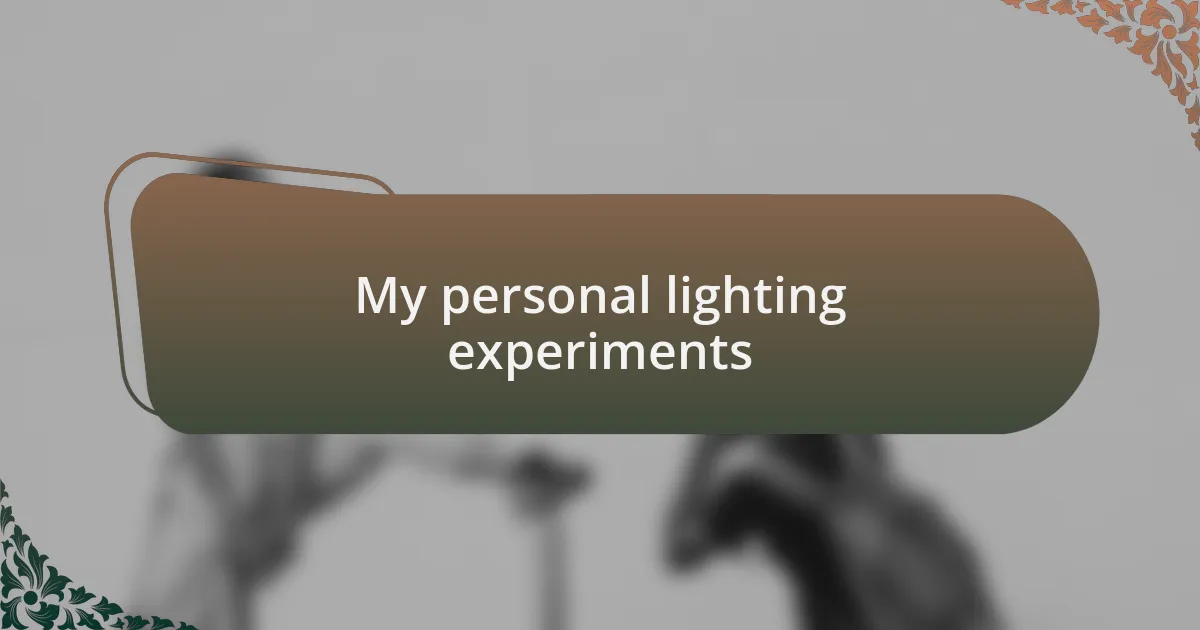
My personal lighting experiments
One of my favorite experiments involved backlighting during a golden hour shoot. I placed the sun behind my subject, creating a stunning halo effect around them. I was amazed at how this simple adjustment not only highlighted their features but also infused the image with a warm, ethereal quality. Have you ever noticed how backlighting can transform an ordinary shot into something magical?
In another session, I played with colored gels on my light source. As someone who loves experimenting with color, this was an exciting challenge. I vividly recall using a deep blue gel which cast a surreal tone across my model’s face, making the portrait feel like it belonged in a storybook. The emotional response from viewers was incredible, sparking discussions about the mood conveyed. Have you tried experimenting with colors in your lighting?
Sometimes, I’ve deliberately worked with harsh lighting to create stark contrasts. I remember a particular portrait of a friend where I intensified shadows to highlight the lines of their face. The resulting image was raw and powerful, evoking a sense of intensity that simply wouldn’t have been captured with softer light. Don’t you think there’s a unique beauty in showcasing imperfections through bold lighting choices?
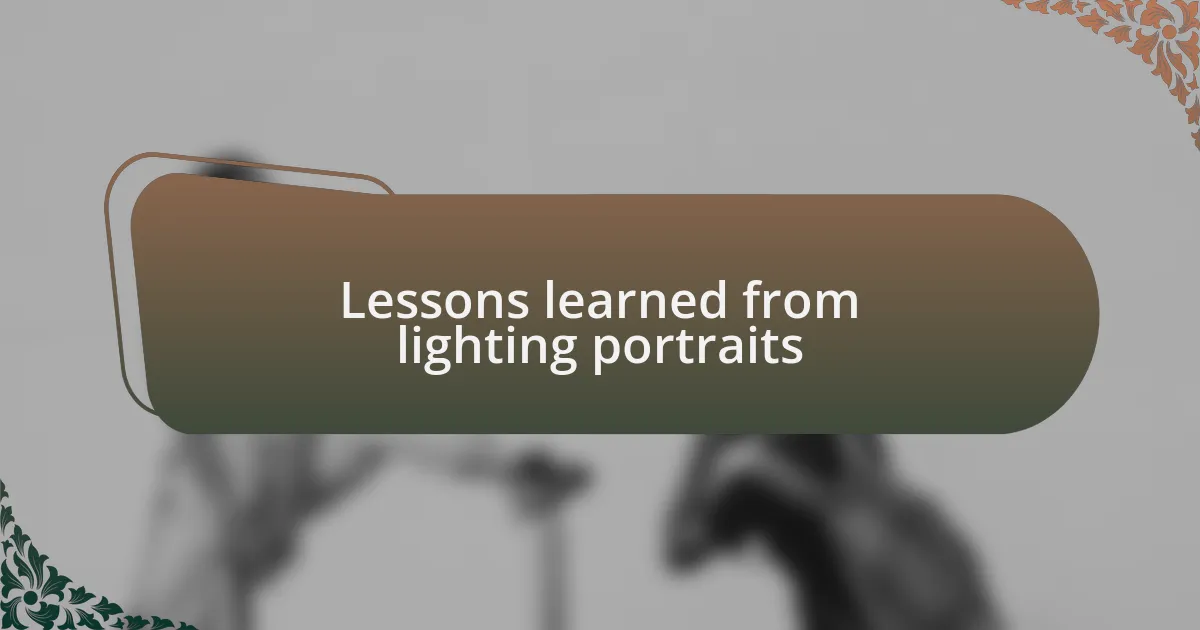
Lessons learned from lighting portraits
One key lesson I’ve learned from lighting portraits is the importance of directionality. During an indoor shoot, I positioned a soft light source at a 45-degree angle to my model. This not only accentuated the contours of their face, but it also added a dimension that a flat light could never achieve. Have you ever noticed how the angle of light can completely change the mood of a photo?
Another revelation came when I used reflectors during a shoot on a cloudy day. I remember experimenting with silver and gold reflectors and how they infused warmth into the portraits, creating a inviting, memorable atmosphere. It was fascinating to see how mere reflections could alter the whole tone of the composition. How often do you leverage everyday tools to enhance your lighting?
Lastly, I discovered that the color temperature of my light drastically affects the mood of my portraits. One time, I shot during the blue hour—just as the sun dipped below the horizon—and used a warm light to contrast with the cooler ambient light. The result was a captivating blend that conveyed both tranquility and warmth, leaving viewers captivated. Isn’t it amazing how just a slight adjustment in color temperature can shape the emotional narrative of your work?